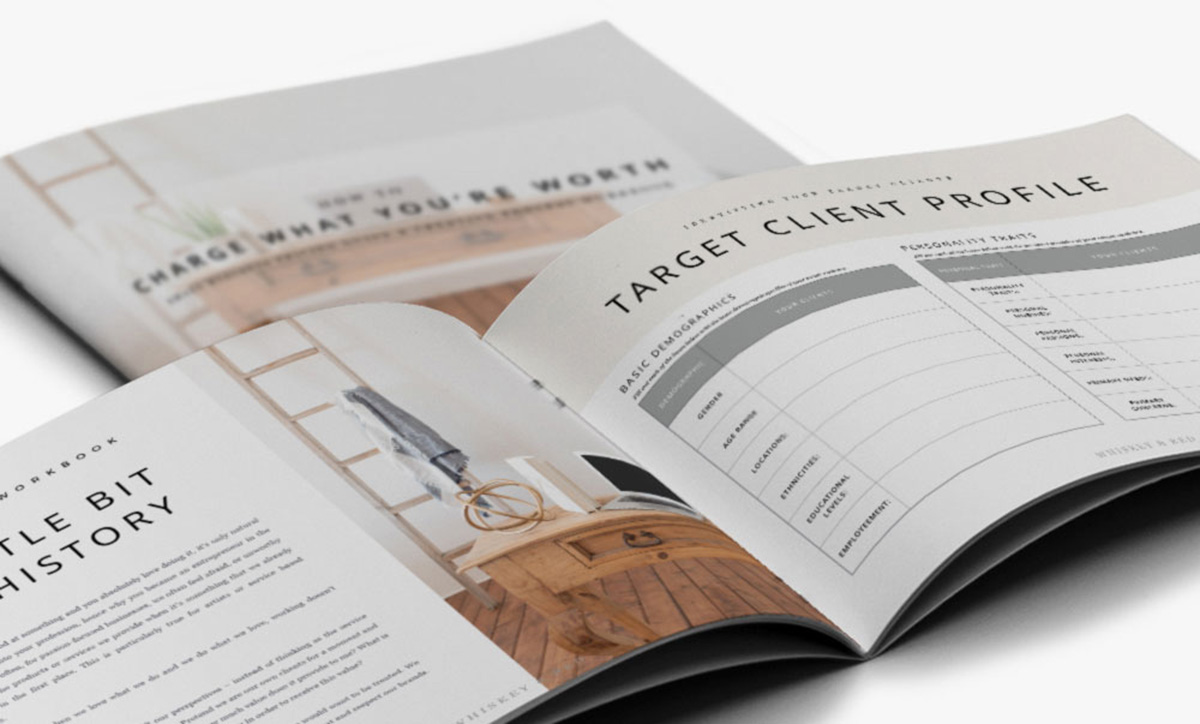Before I jump into this post, I want to ask you a question. Think about a time (recently) you had a really amazing purchasing experience? What a purchasing experience? When you did something that involved spending money. Did you go to dinner at some new restaurant and have the most amazing dinner ever? Did you go see the most amazing movie you’ve ever seen? Did you just come back from a vacation that you’ll never forget? Those are purchasing experiences where you had to spend money, but the value you received in return was so worth it. Were you concerned about the price? Maybe a little, but you know it was worth it, and you’d do it again in a heartbeat.
Keep this memory in mind as we continue on through this post, and then I’d love to hear about it in the comments below. What was your experience, what made it so great, and how worth it was it to you?
Ok, on to the post!
When we love what we do and we do what we love, working doesn’t always feel like work.
When you’re really good at something and you absolutely love doing it, it’s only natural to want to turn it into your profession, hence why you became an entrepreneur in the first place! But – often, for passion-focused businesses, we often feel afraid, or unworthy to charge for the products or services we provide when it’s something that we already love doing in the first place. This is particularly true for artists or service-based businesses. This is because when we love what we do and we do what we love, working doesn’t always feel like work.
We as entrepreneurs need to shift our perspectives – instead of thinking as the service provider, think as the service recipient. Pretend we are our own clients for a moment and think about what it is that we are buying. How much value does it provide to me? What is that value worth? What am I willing to do and pay in order to receive this value?
Understand the Wants vs. the Needs of Our Clients
Anything that provides pleasure or joy to others is valuable. Whether it’s art, food, music, or anywhere in between, if what you’re passionate about provides joy in the lives of the people you work with, then your passion provides value.
But understanding what that value is worth for your clients is where the clarity in your pricing will come from. Are you fulfilling a want or a need? And what is that solution worth?
Do you provide a product or service that comes from a place of need? I’m talking about something critical to the health, and well being of an individual? This could be food, transportation, medicine, etc…
Or do you provide a product or service that comes from a place of want? Something not necessary for survival, but it’s necessary for the soul?
When we talking about making purchases we’ll often say, “I NEED to buy this”. Looking at our own products and services, do people really need to buy it? What is it that they are ACTUALLY buying from you? An item, or an experience?
EXAMPLE:
When I was going to purchase my new computer for my business, I knew that I NEEDED a Mac. There was no other option in my mind for the brand of computer I was going to buy. I am a Mac girl through and through. I still have my original iPod from way back when.
While other PC computers are perfectly capable of handling the requirements I have for my technical needs, I NEEDED a Mac.
It’s a combo of both WANT and NEED, and knowing what that combo is worth to our clients.
Did I really NEED a Mac? Honestly, no. I WANTED a Mac. I could have done just fine with any other laptop and I probably would have saved a lot of money, but to me, the Mac was what I needed and I was willing to pay more for it. The simplicity of the Apple programs, user-friendly experience, completely connected applications to all the Apple products and the quality that comes with the Apple brand is worth it to me. So while another computer could have filled the most basic needs for my business, to me the Mac was worth it.
We make purchases like this all the time. It’s a combo of both WANT and NEED, and knowing what that combo is worth to our clients. Then knowing how much value we bring to solving that need and what that value is worth.
So how do we build up our want-need value in our brands? By amplifying our brand’s experience.
Amplify Your Brand’s Experience
Your brand needs to be seen, felt, touched and heard.
Life is all about the experience. Our brands need to create an incredibly unique experience that is seen, touched, felt and heard, making that lasting impression that helps provide the clarity in the value we offer. We can give them something that they can’t get anywhere else.
Through our products and services, we are actually providing someone with an opportunity for a treasured experience. No matter how mundane we might think the product to be, focusing on the experience it provides for the use will help provide clarity in its value.
EXAMPLE:
For those of you who know me personally, know that I LOVE cooking. Pasta is my current obsession right now and I am in love with the amazing pasta maker I bought off Amazon. If you’ve ever looked up the giant variety of pasta rollers there you’ll know that they range in prices from $20.00 – $200.00.
I love hosting parties and bringing people together and a great way to do that is through food. So I wanted to buy the pasta maker that has all the fancy hookups so that everyone could customize their own pasta when we had our pasta night parties. Does the machine make the pasta taste any better because of the price of the machine? No, that all has to do with the ingredients, but the custom options make for an amazing experience had by all, and even though it might take about an hour and a half to eat dinner, the experience is totally worth it.
Why We Need to Charge for Our Services
In most situations, people get more value out of something they pay money for vs. something they receive for free. By making a financial investment into something, the buyer naturally becomes more personally invested in the purchase, invested in the overall experience, and invested in getting the most from their financial investment. So by charging for the products and services we provide, we are actually helping the buyer receive more value in return.
EXAMPLE:
I know all you bloggers and online businesses will be able to identify with this one. Remember back when we were first getting started and we kept hearing about “self-hosted” and “free hosted” sites? Free always sounded great and all but I knew I wanted to have the accountability that came from self-hosting my own site and investing financially in the success of my brand. Knowing that my hard-earned cash, especially when my cash income was still low, was going toward my website, I was way more committed to investing time, energy, and more income into making it successful.
If I had opted in for the free-hosted site options, I would most likely not have committed so much time and energy upfront and my likelihood of being where I am today is less likely.
I am not saying that free-hosted sites are any less amazing, it all depends on the individual, but for me, making that financial investment, I was so much more committed to a successful outcome.
Of course, we all love free stuff too. If you asked someone whether they wanted your product for free or to pay for it, most likely they are going to want it for free. But if we continue to offer our products and services for free, this is only teaching our clients, and our community, to expect this from us. Then, later down the line, when we decide to now charge for our work, people are going to expect a whole lot more from us since they are now paying for something they always used to get for free.
But what about those times when we don’t want to charge? Or we’re not ready to charge yet?
Branding Our Sales Terminology
In the beginning, charging for our products and services can be really uncomfortable, but this is the most crucial time for our brands’ development. The decisions we make early on will be guides to how our brands will be received by our audiences later down the line.
If you don’t know what the dollar amount of your value is worth just yet, don’t let that ruin the future of your prices. Pay attention to the terminology you use when offering your services, especially if you’re choosing to offer them for free.
Instead of using the word “free” or “sale” or “discount”, choose words that keep the pricing and value power in your court like “gift” “offer” or “bonus”. Those words describe actionable rewards from the seller vs. un-actionable efforts from the seller. Telling someone you are going to give them something as a gift because of _______ (fill in your reason here) this makes the receiver feel that much more special and chances are they will value your product/service/time so much more because of it.
This choice of terminology also lets people know that these “bonuses” are not a permanent factor in how you run your brand. This is a limited time bonus that won’t last and might never come back again. These make for a sense of urgency on the receiver’s side to be sure and take advantage of this amazing gift and holds them accountable for when they miss out on it.
If you are just getting started and looking for people to test your products and services out to, let them know why they are receiving this incredible gift from you and what you expect in return.
EXAMPLE:
You have a product or service that a friend or family member could totally benefit from and you want to give it to them for free, but in return, you want to use them as a case study for future clients or get a testimonial to use for your product/service, or even have them help promote your new business and get your name out there.
There can be lots of reasons why you give away your value for free, when it comes to financial value, but always have a reason.
Free Resource!
Need a little more help in defining and pricing out your brand’s value? I’ve created a personal pricing workbook, here to help clarify all our small business and personal expenses as we develop our creative process and pricing for our various products and services. By understanding the different elements that factor into our brand’s pricing strategy, we can focus on creating an engaging and personal purchasing experience for our clients and provide more value through our products and services.

This 40 page workbook includes research chapters, worksheets, charts, spreadsheets, stat trackers, audience profile questionnaires and extra resources to help empower your professional workflow and pricing confidence.
Communication is only successful when the receiving party understands your content exactly the way you meant it to be understood.
So by exploring what other factors influence your ideal clients’ purchasing habits, we’ll have greater clarity on how to best position your sales. Download your workbook HERE.
We are our brand. We need to treat our brands the way we would want to be treated. We teach others how to treat and respect our brands by how we treat and respect our brands. And this includes how we price our value.
Remember that memory I mentioned above? How can you apply elements of what you loved so much about that memory into your own brand experience? How can this added value in your brand experience raise the worth of your products and services?







